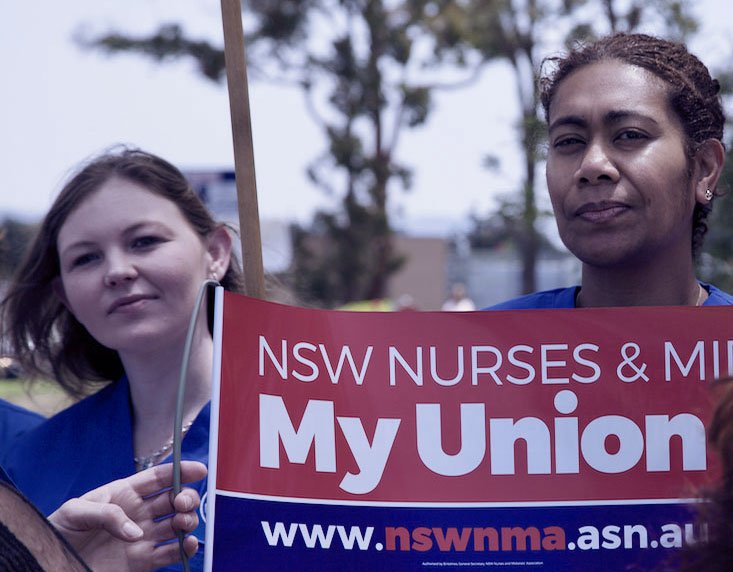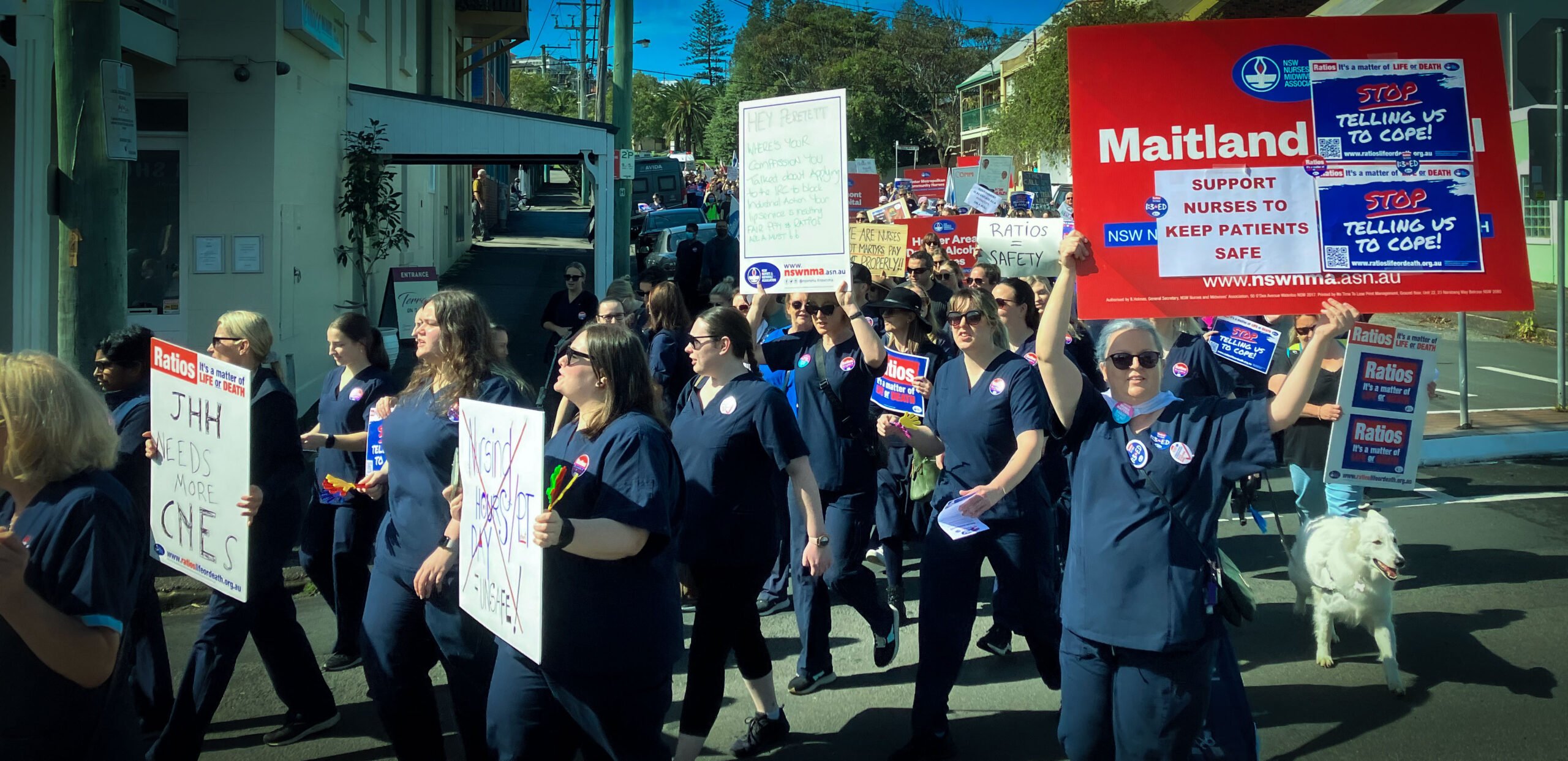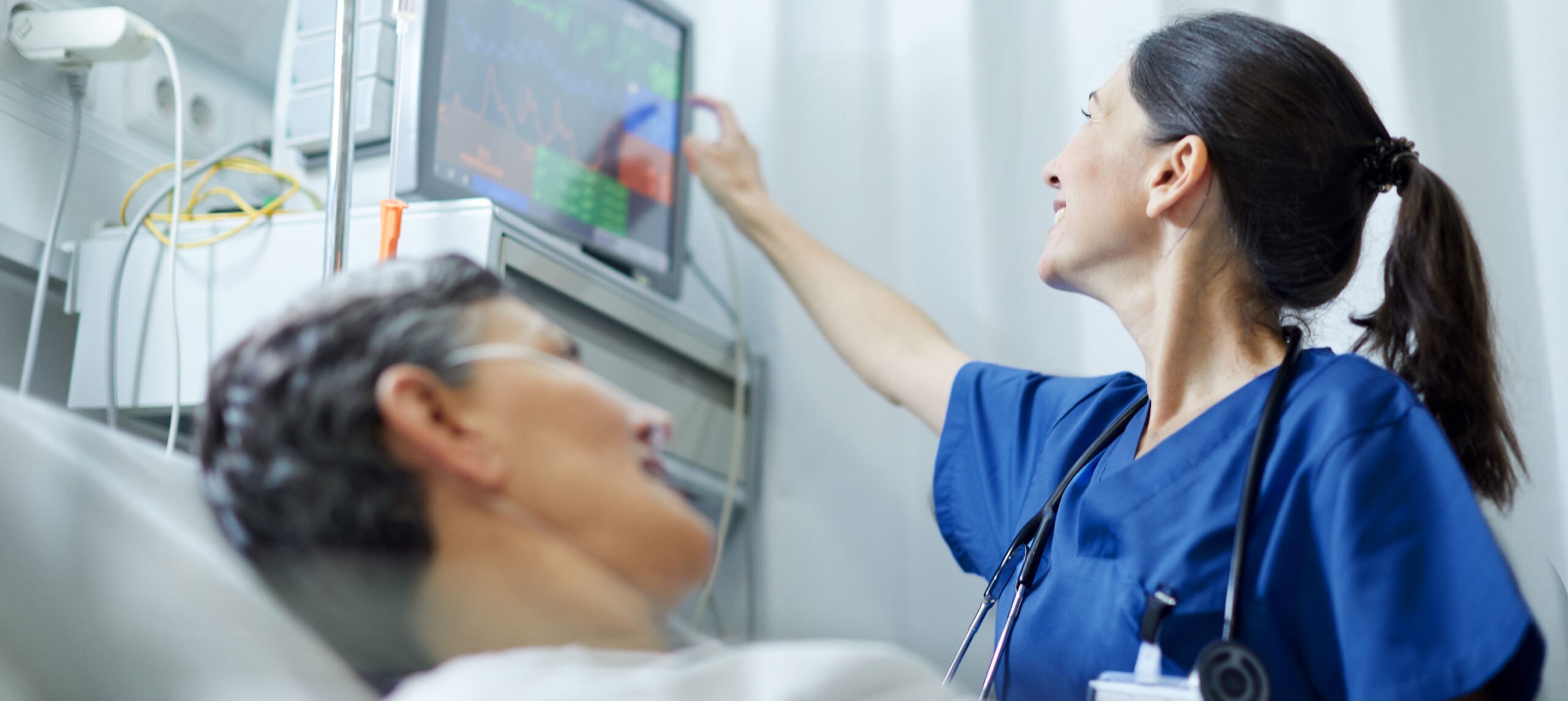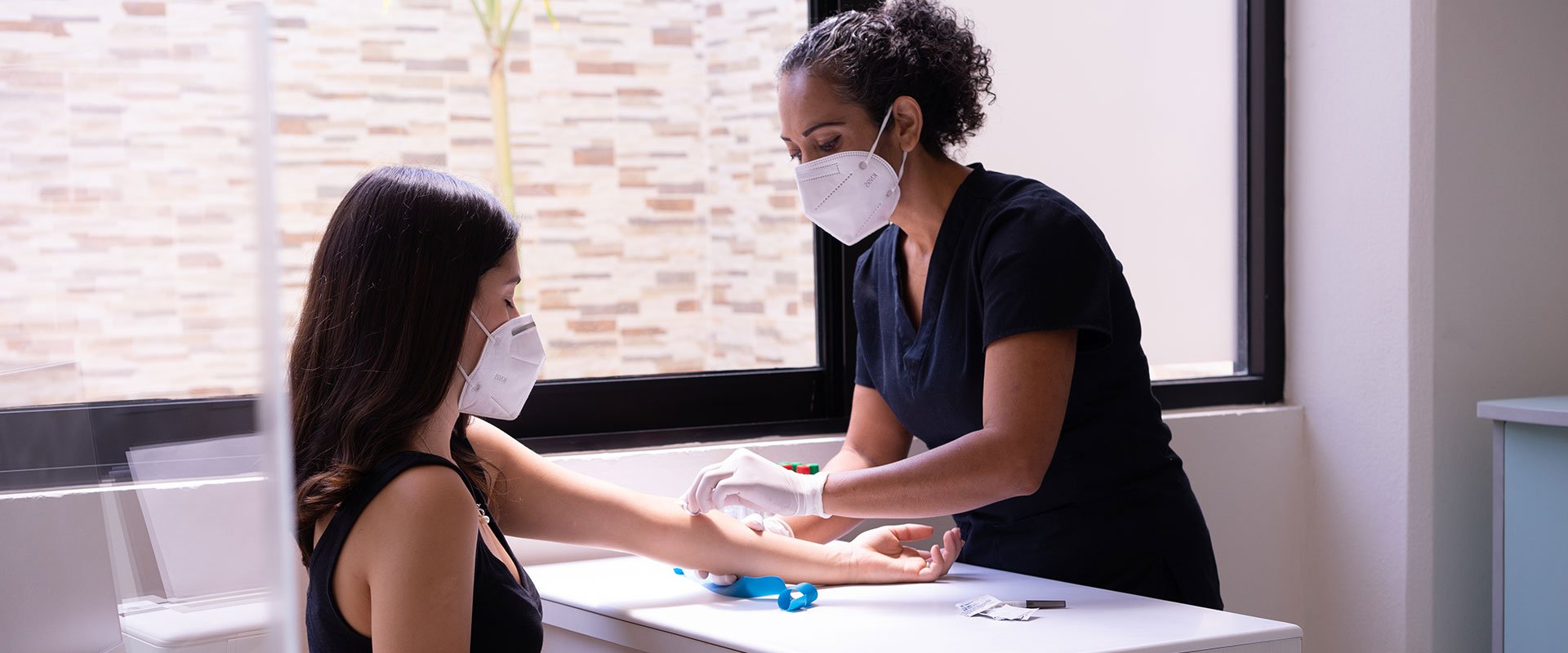 RN training doesn’t prepare you for everything!
RN training doesn’t prepare you for everything!
I thought my nursing training was very comprehensive. I trained in a large teaching hospital at the time of 12 week stints on general wards, set modules and clinical time in each speciality, with the emphasis on teamwork, patient care and academic study. After a variety of nursing jobs, disillusioned with the way City hospital nursing was going, I took a post ‘out bush’ to experience some primary health care and inland Australia. During my years there (I went in the 1980s) I saw everything you could imagine and more. In one week in an isolated community I saw many different conditions, had to manage emergency situations of all sorts and learnt that adrenaline can only keep one awake for so long!
I’d sort of (naively) assumed that I’d be taken out by car by someone who would give me a handover – wrong! No one asked if I minded flying in a small plane or got airsick – although not having done it before I wouldn’t have known anyway! (Luckily I don’t if it’s not too bumpy or less than 2 hours!). Once there, a quick handover and the departing RN got on the Royal Flying Doctor Service (RFDS) plane and was off!
Most days brought ‘normal’ clinic routine of overnight issues like sick babies, immunisations, antenatal checks, cuts, URTIs, skin and eye infections, antibiotic injections, health checks and health education at the school and women’s centre. Helped by 2 wonderful Aboriginal Health Workers, I muddled though the rushes and quiet times. No appointments, no waiting in line here! There were also routine outstation clinics, emergencies and out of hours calls. And then of course the unexpected! This is just an example of what I experienced in one week. Only some of it my training and previous experience had prepared me for!
Day 1.
A message came from Town that a baby they were following up was in our area. Off for a drive round to check the likely homes and camps. I used this time to look up some old people, children, men and antenates who hadn’t been to the clinic for checks lately or were due follow up. I didn’t get taught to drive a 4 wheel drive during nursing training unfortunately, but the local teachers, policeman and administrators gave me tips on how not to get bogged (I only managed to bog badly once in all the time I was out there!), and the Aboriginal Health Workers were wonderful sources of information about who lived/camped where and who was related to whom, along with likely places they might have gone. I had to learn at least a few words of the local language very quickly and cultural differences were a minefield but a necessity to understand. Nursing training taught me to respect different cultures and languages, so I made the effort to learn which helped me settle in and become trusted and respected. Something that wasn’t taught in hospital was that no men ever came to the clinic unless it was an emergency, as the building was considered a ‘woman’s place’. Avoiding the camp dogs, without showing fear or aggression, was another thing I had to learn.
That night I was woken by a car stopping outside followed by voices and a loud banging at the door. I learnt that the more voices and cars, louder the banging the more urgent it was! This was a call to a woman in labour. A multigravida who had reached term and gone into Town to await the birth had come back the evening before and gone to camp in the creek because she was homesick!
Contemplating delivering a baby in a creekbed camp by fire and torchlight is quite scary, especially not being a midwife! Luckily, it was only the early stages and we managed to transfer her to the clinic without incident. An urgent call went to RFDS – at least I had been taught how to use the radio just before I was flown out to the community!
RFDS were sending a plane, now for the next fast learning curve. How to light the flares on the airstrip so the plane can land, drive up and down it correctly to check for damage and chase off the kangaroos! Or arrange for someone else who knows how to do this, all whilst monitoring the patient! Find the local community elder bush midwife to help! At least leadership and prioritising was something I had been taught! In the meantime the baby decided to arrive, somehow the things I had been taught in midwifery module came back from the depths of my memory and a healthy baby boy was delivered, albeit rather suddenly – it was her 5th,! By the time the RFDS midwife arrived it was all over and both were doing well!
Day 2.
I managed to get in a few hours sleep before the Health Worker got me out of bed to suture up a shoulder wound from a boomerang fight! People were in and out all day wanting news on Mum and baby as well as the usual treatments. No luck catching up on sleep that evening as I was called out to an old lady with trouble breathing. Call to RFDS to check with the Doctor. Inserting an IV by torchlight on a veranda and hanging the bag up on the gutter using a wire coat hanger, was another new experience! Then I had to stay up to monitor her for the next four hours. I needed coat hangers for my eyes by then! Luckily she responded to treatment and did not require evacuation so I could go home to sleep.
Day 3.
Again woken by the Health Worker as it was mail plane day and things had to be packed up to be sent into Town. The 4 wheel drive, which I still had outside, was needed to get out to airstrip. This was our weekly contact with outside world; mail, books, even milk and food parcels sometimes! I learnt never to try to do anything much on mail plane day as pay cheques came that day too, so throughout the community the afternoon was taken up with card games. At least I finally caught up on some sleep! Well, until midnight!
Then a carload of men came back from the nearest roadhouse and banged on the door wanting paracetamol for a headache! I had been warned of this, and the pitfalls of treating people from my house, so I sent them away with a telling off. I learnt that the best way to manage out of hour’s calls was to respond to emergencies and serious call outs without complaint but to always go to the patient or clinic. I kept an emergency box in the house for call outs. However, non urgent calls got a telling off and ‘come in during clinic time’ speech. This applied to the non Aboriginal people as well – it was a bit much having dinner with someone who started to ask if they could get some antibiotics for their boil, book their pap smear, immunisation or have a dressing done afterwards!
All the out of clinic calls meant that my pocket notebook that I had learnt to use in my training was well used and an absolute necessity, and I looked back to the ‘write it down NOW nurse’ instruction so often given by the Ward Sister on my first ward with a gratitude I never thought I would feel! The time to write up notes was often on mail plane day or summer afternoons and a week or even a few days afterwards it would have been too easy to forget. The essential items I was never without, pen, notebook, gloves, sunnies, water and hat!
Day 4.
Today was outstation visit day. This meant filling up the 4 wheel drive with dressings, emergency kit, immunisations and their cold chain monitors in an esky, water and food, notes for those who lived there, portable scales and all the emergency vehicle equipment. A call to Town to tell them I was off and an hour’s drive to the outstation along a sandy track. In wet weather this was sometimes impassable, so days were changed dependant on weather, events and emergencies. Once I went all the way out to find that everyone had gone to an event at another community, so I had a picnic and went home – it wasn’t hard work all the time!
A long, hot day of health checks, immunisations, weighing babies on the portable scales hung from the back door of the 4 wheel drive, chatting with community members about nutrition, general health, skin and eye care and childrens health. This is where I felt most useful, educating and promoting good health, but I had to spend so much time treating and following up there was never enough time to do this. A bit of a different approach from City promotions, coloured posters didn’t work (nowhere to put them up), but picture books and models were good for explaining things. There was a longstanding agreement that packets of condoms were available from the bag on the front seat of the car and taken by people who wanted them during the day. Again, it wasn’t until they weren’t there that I leaned from a Health Worker in a whispered comment that they needed to be! In the clinic condoms were also accessible to all from a slightly more private area, without request. Sex education had to be very private and mostly with only a few women at a time. Men would send one man to be a ‘spokesman’ to ask for men’s health information at end of clinic times or bring a sick man after hours with an escort of his brothers for treatment of an STD, and then usually only in an emergency. Otherwise they waited for the male Doctor’s visit.
Once safety home and a call to Town to say I was back safely, the locals had seen me drive in and some were gathered at the clinic for treatments. I learnt it was better to see them as it built relationships for later but sometimes after a day at the outstation, I wished I could do what the City does – put up a closed sign and go home!
Day 5.
Normal clinic day with no surprises until late. A non Aboriginal man rolled his ute coming back from the roadhouse after Friday night drinks. I was called out to attend with police. The driver had extracted himself and was walking about. Luckily only cuts and bruises and no sign of head or spinal injury. After consultation with RFDS doctor over radio he was transferred back to the community for observation. More overnight and weekend checks for me to do! (He was fine).
Day 6.
Checked on last night’s driver and then home to rest! A knock on door in the afternoon revealed a contractor from a nearby worksite who told me he ‘didn’t feel well’. He reported no other symptoms. He had stayed at the worksite over the weekend on his own. The contractors usually stayed away from the community and very rarely came to the clinic for anything. I took him to the clinic for more investigation. Signs were grey and sweaty, irregular weak pulse and weakness in limbs, elevated BP and he appeared dehydrated. I called the RFDS doctor who was initially inclined to get him to drive himself out to the Town; however his pulse remained very irregular (we had no ECG at the clinic then) and my instinct was that something was very wrong. When RFDS arrived the ECG showed major changes so he was evacuated to City hospital. He was having an infarction. I have always taken the phrase ’I don’t feel very well’ in conjunction with a greyness about the person, very seriously. My cardiology training taught me something!
Day 7.
One of the teachers came by in tears; her dog has been attacked by a camp dog. Luckily people managed to separate them but her dog was badly bitten and had a skin flap hanging. One of the perils of being the only health person for 500km is that people bring every first aid and often other problems to you to fix! A few sutures later the flap was back and a call to a vet resulted in instructions for ongoing care. My nursing training definitely didn’t prepare me for this!
And that was just in 7 days! There are so many things I could write about from my time in the bush, a 2 hour drive that turned into a 3 day convoy of all the vehicles that got bogged along the track, trying to put a backslab on an injured child with a broken arm with a snake slithering about on the floor around us and community men chasing it with sticks, the chaos and fun of the 2 weekly doctors visits, community events, fights, seeing and treating diseases that I had previously only read about, like syphilis, donovanosis, rheumatic fever, and of course the numerous wonderful, crazy, helpful and interesting people in and around the community!
Over the course of my time providing a nursing service in the bush I learnt some things that cannot be taught in classrooms. Things like knowing one’s own limits, when to ask for help, when to be firm, looking beyond the person to their history as sometimes the injury cannot be seen, dealing with domestic violence cases with the added complication of local cultural issues, working as part of a diverse community team as well as a remote health service team. The benefit of learning to turn ones hand to things not usually in the scope of work for a registered nurse, given the right instructions from afar, doctors, specialist nurses, dentists and even on the rare occasion, vets (I tended a horse as well as the dog at the direction of vets, and a friend of mine once has to treat a camel!) and engineers (the generator broke with great regularity). Yes, some of the things I did were well outside the scope of a RN but they were done as a member of the community who was asked to help because I was there and capable, not as an RN. The number of people who provide invaluable assistance to the bush nurse like police, teachers, administrators, Aboriginal Health Workers, Community Elders is huge and without this network of support I would not have survived nursing in remote areas. However, by far the most useful help and advice came from the other bush nurses and health workers I met or just spoke to the radio.
To all ‘bush nurses’ and Aboriginal Health Workers, thankyou, and keep up the good work.








